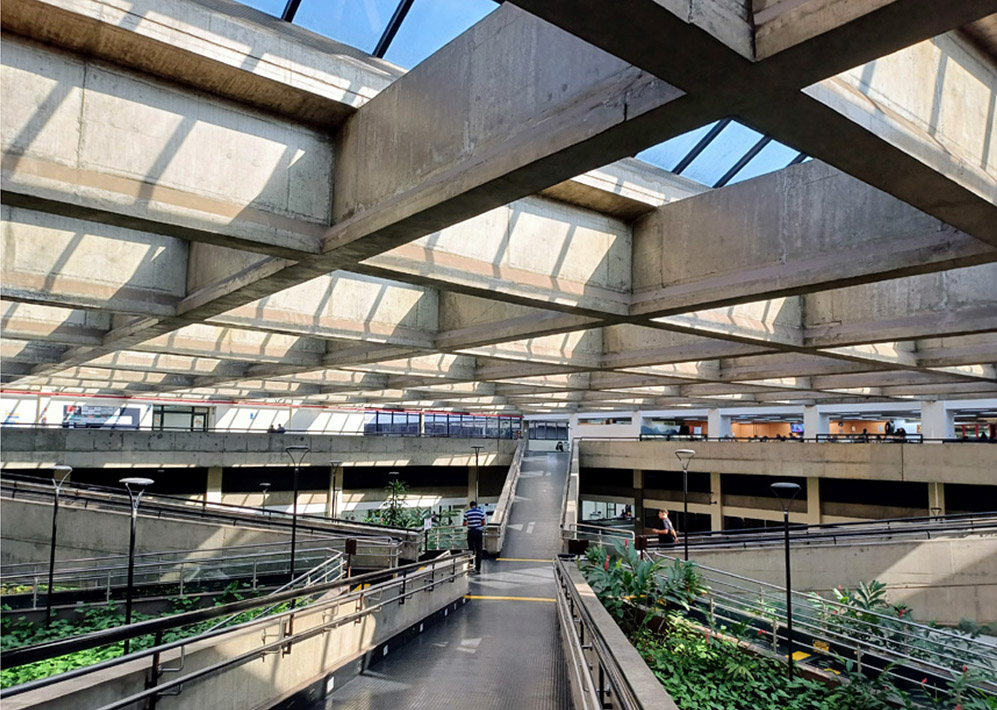Notes on architectural flexibility through the Santa Casa de Misericórdia de São Paulo
Downloads
DOI:
https://doi.org/10.52200/docomomo.71.04Keywords:
modern hospitals, healtcare architecture, brazilian brutalist architecture, architectural flexibility, adaptable designAbstract
This article analyses the conversion of a big hospital and teaching complex, designed between 1968 and 1978 and commissioned by Santa Casa de Misericórdia de São Paulo to a team of architects led by Fábio Moura Penteado, into the biggest criminal justice complex in Latin America, since it was acquired by the State of São Paulo in the mid-1990s and opened in 1999. The architectural characteristics and the superlative scale of the complex constitute a privileged object to analyze the potentialities and limits of architectural flexibility, as well as how this concept is related to the modern project culture, specifically with the general strategies developed by the so-called Escola Paulista.
How to Cite
Published
Issue
Section
License
Copyright (c) 2024 Ivo Giroto

This work is licensed under a Creative Commons Attribution 4.0 International License.
Plaudit
References
ALMEIDA, Teófilo de, “Evolução hospitalar no Brasil: ontem e hoje” (1944). In Evolução e planejamento hospitalar. Volume 2. Rio de Janeiro, Ministério da Saúde, 1965.
AM, “Complexo Judiciário da Barra Funda, projetado para ser hospital, é o maior fórum criminal da América Latina”, Diário da Justiça, June 13, 2012, https://api.tjsp.jus.br/Handlers/Handler/FileFetch.ashx?codigo=40207.
COSTA, Renato Gama-Rosa, “Apontamentos para a arquitetura hospitalar no Brasil: entre o tradicional e o moderno”, História Ciências Saúde-Manguinhos, n. 18 (suppl 1), Dez. 2011. [Accessed 10 mar. 2022). Available at https://www.scielo.br/j/hcsm/a/wfwX78JBNmwQxHLwkStzmmy/?lang=pt# DOI: https://doi.org/10.1590/S0104-59702011000500004
HERTZBERGER, Herman. Lições de arquitetura. São Paulo: Martins Fontes, 1999, 146-149.
HUGHES, Jonathan. “Hospital-City.” Architectural History, no. 40 (1997): 266–88, https://doi.org/10.2307/1568678.1997, 268. DOI: https://doi.org/10.2307/1568678
JAMES, Paul W.; TATTON-BROWN, William, Hospitals: Design and Development,
KARMAN, Jarbas, “o hospital bem planejado” (1958). In CYTRYNOWICZ, Monica Mussati, Instituto de pesquisas hospitalares arquiteto Jarbas Karman, São Paulo, Narrativa Um, 2014.
KIM, Young-Ju, “On Flexibility in Architecture Focused on the Contradiction in Designing Flexible Space and Its Design Proposition”, Architectural Research, Vol. 15, No. 4, December 2013, 191-200 [Accessed March 14 2022]. Available at http://dx.doi.org/10.5659/AIKAR.2013.15.4.191. DOI: https://doi.org/10.5659/AIKAR.2013.15.4.191
LACANNA, Giuseppe, “Med/Architecture: the Typological evolution of Paradoxical Buildings”, 2nd ICAUD International Conference in Architecture and Urban Design, Epoka University, Tirana, Albania, May 2014, 294 [Accessed January 18 2022]. Available at http://dspace.epoka.edu.al/bitstream/handle/1/1045/293.pdf?sequence=1
LEFEBVRE, Henri, The production of space, Cambridge: Blackwell, 1991.
PENTEADO, Fábio. Irmandade da Santa Casa de Misericórdia de São Paulo. Hospital Escola Júlio de Mesquita Filho. São Paulo, 1978, 3-4. Not published.
PENTEADO, Fábio. Fábio Penteado: ensaios de arquitetura. São Paulo: Empresa das Artes, 1998, p. 70.
PEVSNER, Nikolaus, Os pioneiros do desenho moderno, São Paulo: Martins Fontes, 1980.
PEVSNER, Nikolaus, A history of building types, Princeton, Princeton University Press, 1997, 158.
RABENECK, Andrew; SHEPPARD, David; TOWN, Peter, “Housing flexibility/adaptability”, Architectural Design, no. 2 (1974), 86-87.
ROCHA, Paulo Mendes; WISNIK, Guilherme (org.). Encontros, Rio de Janeiro: Beco do Azougue, 2012.





